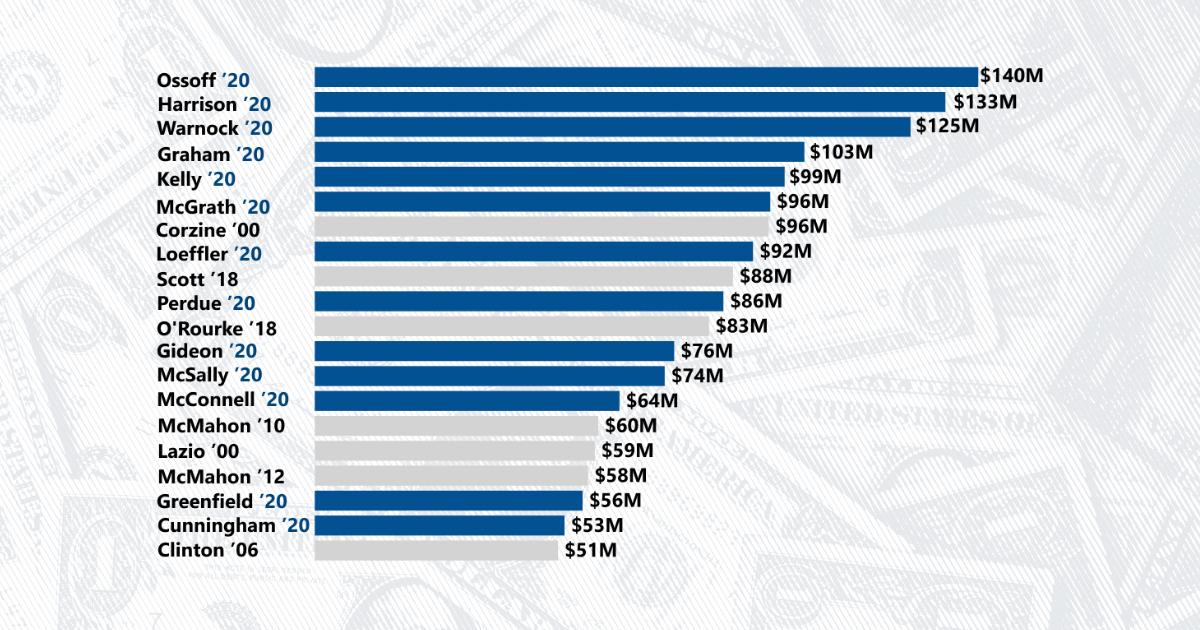Government
The October 2019 Democratic debate and the data behind it

Everything from light switches, cell phones, cars, and even military equipment needs semiconductors. And with more than 80% of semiconductors produced overseas, disruptions to the supply chain in recent years made it difficult for domestic manufacturers to produce a wide range of consumer goods.
In response to the issue, Congress recently passed the CHIPS Act, a $280 billion spending package aimed at encouraging the growth of the US-based semiconductor industry. President Joe Biden signed the bill into law on Aug. 9.
Semiconductors are materials used to produce integrated circuits, or microchips, that are used in almost all technology products. Additionally, since semiconductors are used in military equipment, overseas supply chain challenges can pose a national security risk.
Integrated circuits are the fourth largest export for the US, with $53 billion in revenue in 2021, according to data from the US International Trade Commission. Yet the US currently represents about 12% of global semiconductor production, down from 37% in 1990, according to a report from the Department of Commerce.
The CHIPS and Science Act of 2022, referred to as the CHIPS Act, is a $280 billion dollar spending package passed by Congress in July. About $50 billion in spending is directly focused on increasing semiconductor production domestically. The rest of the spending package mostly focuses on science and technology research funding across the US.
The CHIPS Act includes $39 billion in tax benefits and other incentives to encourage American companies to build new chip manufacturing plants in the US. Currently, many US companies outsource chip manufacturing to international-based companies. For example, Taiwan-based companies account for 73% of the market share for contract-based semiconductor production as of 2021.
The remaining $11 billion funds programs dedicated to other parts of the supply chain such as semiconductor design, packaging, and manufacturing. The goal is to entice companies to complete as much of the production process within the US as possible.
More than 187,000 people are employed in semiconductor-related jobs in the US, according to data from the Bureau of Labor Statistics. Forty percent of jobs in the semiconductor industry are in the manufacturing and production sectors.
Employment in the semiconductor industry decreased 36% between 2001 to 2021. According to the Department of Commerce report, the decrease can be largely attributed to increased automation in the production process. The report also cites outsourcing of some production steps to foreign-based firms as another reason for the decrease in industry jobs.
The average annual salary for semiconductor-related employees was $78,580 in 2021. Most of the jobs are considered high-skilled positions, with more than half of employees in the field having a college degree. The Department of Commerce report estimated about 40% of these highly skilled workers were born abroad.
The CHIPS Act allocates $200 million to promote growth of the semiconductor work force through efforts such as job training and graduate school programs. The Department of Commerce estimates that the industry will need an additional 90,000 workers by 2025.
Texas generates the most revenue from semiconductor exports, according to data from the Bureau of Labor Statistics. The state generated $17.3 billion in revenue in 2020, largely due to factories from major companies such as Texas Instruments, Samsung, and IBM.
For more information on employment and industry in the US, check out the USAFacts Economy hub and get the facts every week by signing up for our newsletter.
Government
Government
Government
Government
Newsletter
Keep up with the latest data and most popular content.


